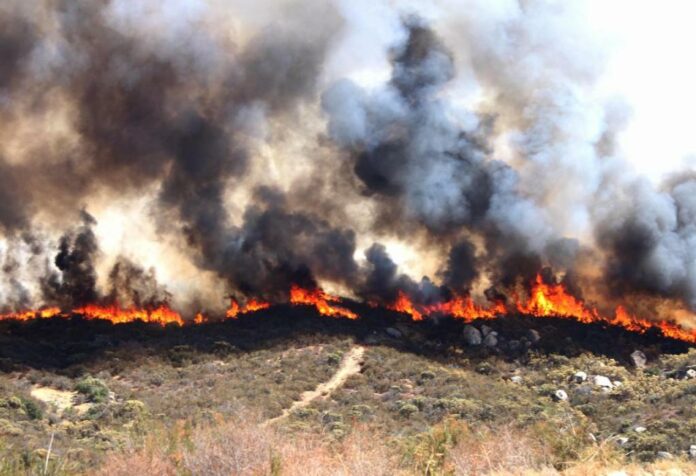
Smoke from fires in Northern California effect air quality in nearby counties.
The Butte and Valley fires, which began on Sept. 9 and 12 respectively, have recently spread smoke and ash throughout Yolo County.
Since the Wragg fire broke out on July 22 near Lake Berryessa, Northern California has been plagued with a series of wildfires, many of which are still burning. As particulate matter from the fires get into the air, health advisories have been sent out when air quality becomes threatening to health.
“We have had four major fires that have impacted our area going all the way back to late July with the Wragg Fire here at Lake Berryessa,” said Tom Hall, Public Information Officer at the Yolo-Solano Air Quality Management District.
Hall explains that a very small amount of particulate matter present in air can be considered dangerous. He adds that, according to the Environmental Protection Agency (EPA), a concentration of 35 micrograms per cubic meter can be considered unhealthy over a 24 hour time period.
“It’s a remarkably small concentration but even scientific studies have proven that that can impair lung function and impact cardiovascular performance as well,” Hall said.
Debra Harris, Burn Program Coordinator from North Coast Unified Air Quality Management District, explains that many factors influence how predictions for particulate matter are made. She states that the Air Quality Index (AQI) consists of categories for good, moderate, unhealthy for sensitive groups, unhealthy, very unhealthy and hazardous air conditions.
The AQI is a scale that ranks air quality on a range from 0 to 500. Smaller numbers correspond with cleaner air quality and are less of a concern for health. The AQI works as a spectrum, where a value of 0 to 50 corresponds with good air quality, 51 to 100 is moderate air quality and 101-150 corresponds with air quality that is unhealthy for sensitive groups. Air that falls in the range of 301-500 is the worst air quality on the AQI and corresponds with hazardous air.
Hall said Yolo County has been fortunate this summer in only having a few days where air quality was considered unhealthy for 24 hours and a few instances where it was unhealthy for a few hours. He adds that the smoke would only drastically impact health if exposure was prolonged or if air quality was worse.
“We don’t expect that the air quality we have had over the past six weeks has done anything dramatically different [to health],” Hall said. “Part of that is because our air quality is really good for most of the year. Usually the air quality is safe in Yolo County.”
Yolo County Health Officer Dr. Constance Caldwell explains that most of the air quality advisories in Yolo County were for air that was unhealthy for sensitive groups.
“Mostly, the sensitive groups who should be careful are those with any sort of lung disease, although also folks with serious heart disease should also be careful. Mostly what they will experience would be shortness of breath, coughing and chest pain. If they are prone to any sort of respiratory exacerbations like asthma attacks, the smoke could bring that on, particularly if they are trying to exercise out of doors on those days,” Caldwell said.
In addition to people with lung disease, heart disease and asthma, infants and young children should take the same precautions as those in the sensitive group.
“The recommendation on those days where it’s considered unhealthy for sensitive groups, [is that] folks should try to stay inside as much as they can and certainly shouldn’t be doing vigorous exercise out of doors,” Caldwell said. “If you have lung disease and its one of those days it says unhealthy for sensitive groups, you want to minimize your outdoor exposure on those days.”
Photo courtesy of CAL FIRE.




